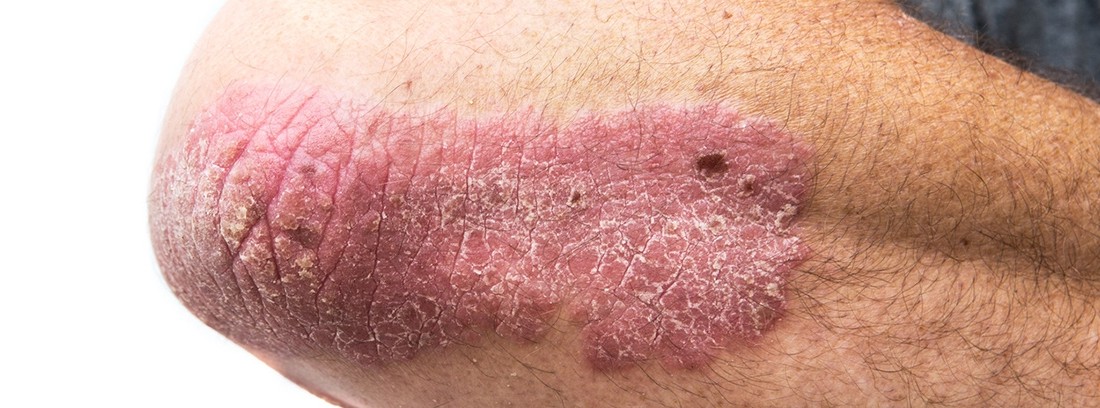Psoriasis: An In-Depth Look at This Chronic Skin Condition

Psoriasis is a common skin disease, in which they form in the skin red areas covered with scales. The areas where it appears most frequently are the scalp, elbows, knees and lower back. Some cases are so mild that they can go unnoticed. In other cases, psoriasis can be very extensive, affecting large areas of the skin.
Psoriasis is not contagious, but it is common to affect members of the same family, that is, to show a hereditary tendency. It can appear at any age or be present from birth. It is more serious in obese patients and in people with an unhealthy lifestyle.
How is it produced?
The cause of psoriasis is unknown. In the skin, there is a malfunction of the cells of the immune system, the so-called lymphocytes. These trigger inflammation that causes the skin to grow faster, causing swollen, scaly patches. There are situations that trigger psoriasis flare-ups.
The best known is emotional stress, as well as trauma to the skin, certain medications, throat infections () or seasonal changes. Psoriasis often improves in the summer with sun exposure and worsens in the fall and winter.
Symptoms
There are many forms of psoriasis. The most frequent is vulgar or plaque psoriasis.
Other ways are:
- Nail psoriasis - causes thickening, loosening and even destruction of the nails
- Pustular psoriasis: instead of developing red scaly patches, red areas covered with grains of pus (pustules) appear
- Inverted psoriasis: appears in areas of folds, such as the groin or armpits
- Psoriasis in drops or guttate: it is a more frequent form in children and young adults. Instead of large plaques, smaller, red, scaly or crusted plaques appear widespread. It usually occurs after a throat infection.
- Palmoplantar psoriasis: is a form that affects only the palms of the hands and soles of the feet. Very thick plaques form that can break and crack, causing pain and difficulty walking.
- Psoriasis accompanied by arthritis: Up to a third of psoriasis patients may suffer from rheumatism called psoriatic arthritis. It manifests itself with pain and difficulty in movement in some joints.
Diagnosis
Dermatologists often diagnose psoriasis simply with a visual examination, examining the signs on the skin, scalp and nails. If there are doubts about the diagnosis, it may be necessary to do a skin biopsy, taking a sample under local anesthesia, generally in the same consultation.
Treatment
There is no curative treatment for psoriasis. However, at present we can ensure that the patient has his disease controlled for most of the time using what is known as rotary therapy, that is, using different treatments throughout the year, and alternating rest periods with phases of active treatment.
Treatment options:
- Topical treatments (in creams, lotions or shampoo): they are used in psoriasis that affects small areas of the skin. The different drugs used are corticosteroids, vitamin D derivatives, tars and anthralins, and retinoic acid derivatives.
- Phototherapy: the knowledge that psoriasis improves with exposure to the sun has led to the development of different treatments based on ultraviolet light. They are administered with lamps or cabinets in hospitals. The most widely used modalities are narrow band ultraviolet B (UBV-BE) and ultraviolet A accompanied by taking a drug called psoralen (PUVA).
- General or systemic treatments: reserved for severe psoriasis that affects large areas of the skin, and for patients who also have psoriatic arthritis. Medications such as acitretin, cyclosporine or methotrexate are used. They can be administered orally or intravenously.
- The latest generation biological drugs: these are the most recent drugs that can be used to treat psoriasis. They include infliximab, etanercept, and adalimumab, among others. They are administered intravenously. Some are only for hospital indication.
Precautionary measures
Many patients want to know what they can do to prevent their psoriasis from getting worse. Patients with a low-fat diet and healthy living patterns have been shown to better control their disease. You should avoid a sedentary lifestyle and obesity, control emotional stress, eat a healthy and varied diet, and practice physical exercise frequently.
(Updated at Apr 14 / 2024)